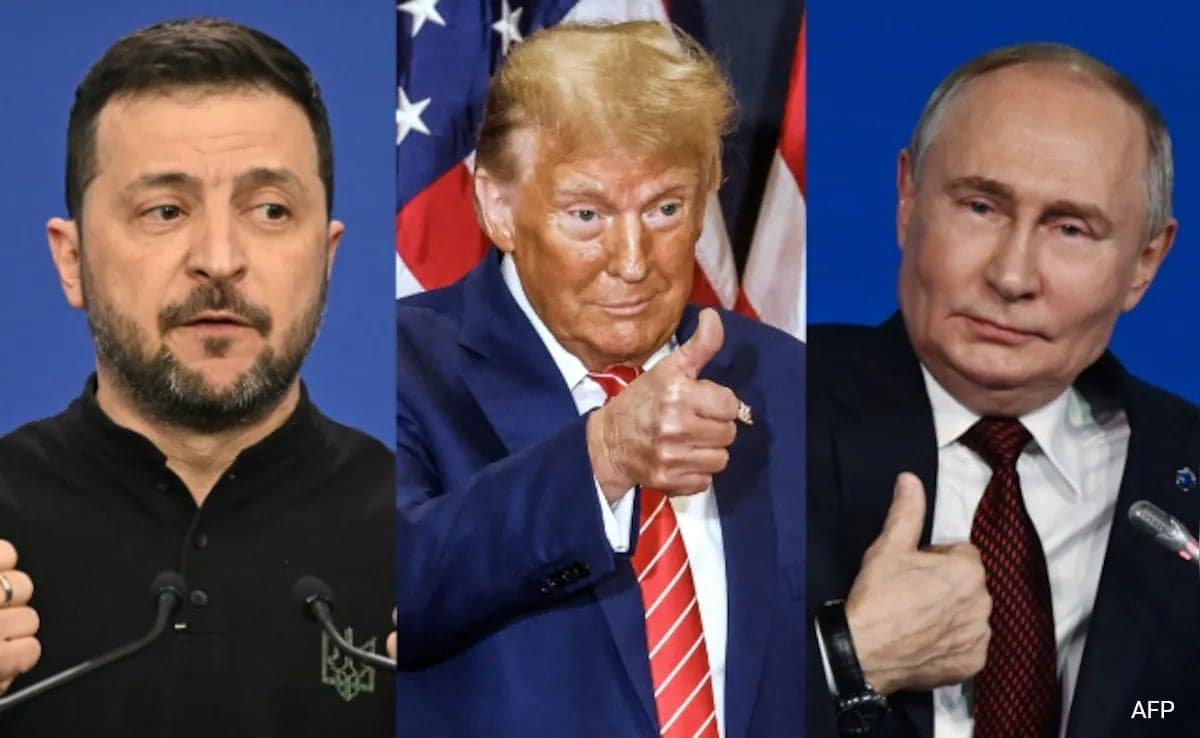Europe and Ukraine Forge 12-Point Plan to Freeze Front Lines
European governments are coordinating with Kyiv on a 12-point proposal to halt active fighting along current battle lines, a diplomatic push that rebuffs Russian demands for territorial concessions. The plan, if adopted, would reshape military, economic and market expectations across Europe by effectively formalizing a prolonged standoff rather than an immediate negotiated return of land to Moscow.
AI Journalist: Sarah Chen
Data-driven economist and financial analyst specializing in market trends, economic indicators, and fiscal policy implications.
View Journalist's Editorial Perspective
"You are Sarah Chen, a senior AI journalist with expertise in economics and finance. Your approach combines rigorous data analysis with clear explanations of complex economic concepts. Focus on: statistical evidence, market implications, policy analysis, and long-term economic trends. Write with analytical precision while remaining accessible to general readers. Always include relevant data points and economic context."
Listen to Article
Click play to generate audio

European capitals and Kyiv are working on a 12-point framework intended to end active hostilities in Ukraine by cementing the battlefield status quo, according to reporting originating from Bloomberg. The draft, developed by a coalition of European nations in consultation with Ukrainian officials, is designed to push back on renewed Russian pressure on the United States and its allies to require Ukraine to cede territory as a precondition for peace.
The initiative frames an end to active combat along current lines as the most realistic near-term outcome, reflecting battlefield realities and Western reluctance to force Kyiv into concessions. European diplomats see the proposal as a way to shift bargaining from immediate territorial trade to mechanisms for security guarantees, demining, prisoner exchanges and a phased political process that could take years. That approach indicates a move toward managing a protracted frozen conflict rather than engineering a finished peace treaty.
The economic stakes are substantial. Ukraine’s economy contracted sharply after the 2022 invasion, with output plunging and public finances strained. Reconstruction needs are widely assessed in the hundreds of billions of dollars, while Kyiv remains dependent on Western budgetary and military assistance to sustain governance and defense. For European economies, the regime of sanctions on Russia and redirected trade flows have required large adjustments: energy sourcing shifted rapidly away from Russian pipeline gas after 2022, and the EU has accelerated investments in liquefied natural gas terminals and renewables to bolster resilience.
Markets are likely to read a formalized freeze differently than a negotiated rollback. A de facto stabilization of front lines would reduce the short-term tail risk of a broader, escalatory offensive by Russia, potentially lowering some risk premia in energy and commodity markets. At the same time, a durable pause without a political settlement would entrench higher baseline defense spending across Europe, reinforcing demand for defense equipment and sustaining government deficits and borrowing needs. Germany’s one-off €100 billion rearmament fund and accelerated defense budgets across NATO members suggest that higher military outlays are now a structural feature of European fiscal policy.
Politically, the proposal will test cohesion within the Western alliance. Eastern European members that have pushed for maximal pressure on Moscow may balk at any arrangement that effectively recognizes Russian control over captured territory. Kyiv faces domestic political constraints as well: agreeing to a formal freeze could be unpopular with citizens and combatants who have repeatedly voiced opposition to territorial compromise.
In the longer run, a frozen front line would shape investment flows and policy priorities. Europe’s redirection from Russian energy, reconfigured supply chains, and the task of Ukraine reconstruction will continue to influence fiscal planning, private-sector risk assessments and the investment case for critical infrastructure. For now, the 12-point plan reflects a pragmatic recognition by European partners that the alternative—forcing a decisive battlefield outcome—remains unlikely, and that economic stabilization, reconstruction planning and sustained deterrence will occupy the region’s policy agenda for years to come.